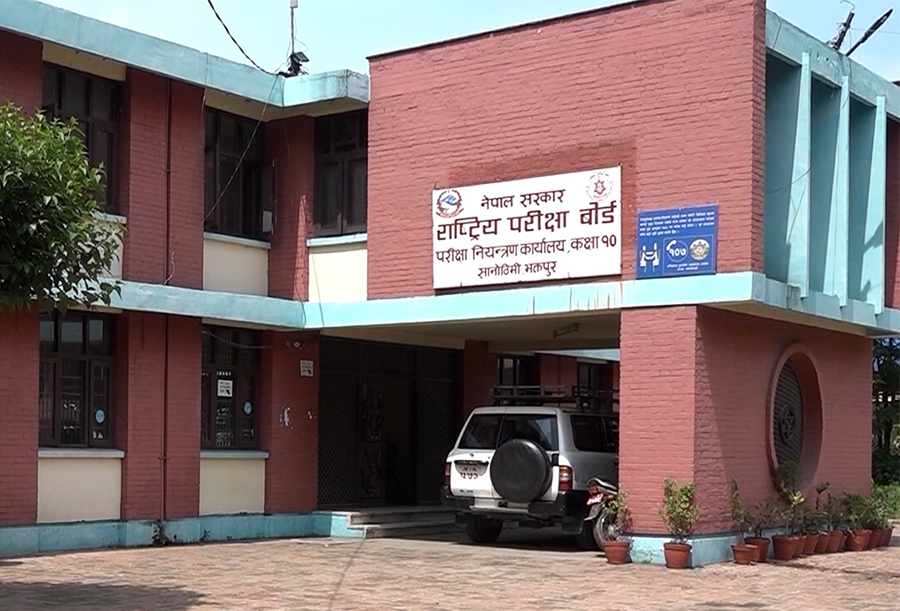
As Nepal’s economy enters a phase of recovery and growth, the country’s financial landscape is at a crossroad of opportunity and challenge. For fiscal year 2025, the projected gross domestic product (GDP) growth rate (4.9%) is greater than the estimate for FY2024 (3.9%), leaving us to wonder: What is the feasibility of financial products such as options and futures markets in Nepal?
It is time to look into derivatives markets in Nepal, the need for them, the challenges of establishing them in this nation, and how derivatives markets are likely to positively affect the country’s financial ecosystem.
Current state of Nepal’s financial system and derivatives market
Nepal’s financial system includes banking institutions, securities market, insurance companies and cooperatives, which are strengthened by banks dominating around 85% of total financial assets. While SEBON is the top regulatory body for securities and commodity derivatives markets, the Nepal Stock Exchange, set up in 1993, is still the only stock exchange in the country.
Despite being an emerging economy, derivatives market in Nepal is still in its embryo stage. “The derivatives market in the country is mainly dominated by commercial banks and the trade primarily caters to forwards and swaps in the over-the-counter (OTC) market,” reads a statement from Nepal Rastra Bank (NRB).
According to a recent study by the NRB, the trading volume of foreign exchange derivative products in the commercial banks were Rs 228.94 billion as of mid-July 2020 with the bulk of the volume consisting of non-deliverable forwards, followed by deliverable forwards and swaps.
Currently, the derivatives market in Nepal is “nascent, dominated by commercial banks, and mostly forwards and swaps are traded in the over-the-counter market,” a National Economic Forum report, states. This narrow focus Indicates a vast potential for growth and development of derivative instruments in the country.
Economic context and need for derivatives markets
Economic indicators for Nepal provide a mixed picture that both supports and challenges the case for derivatives markets. But domestic demand is slowly resuming, infrastructure expenditure is picking up, and tourism and related services are being further revitalised. It predicts Nepal’s GDP will grow by 4.9% in FY2025. But the economy is also still vulnerable to external shocks, with remittances making up approximately 25% of GDP.
That economic backdrop presents a powerful argument for derivatives markets. Agricultural derivatives are pivots to risk management, potentially bringing broader productivity gains to a significant agricultural sector in Nepal, enabling the producer to hedge for price fluctuations and climate shocks. Foreign exchange derivatives would be especially useful in hedging risks arising from remittances and international trade. Moreover, energy derivatives could ease investment and manage risks in this growing sector with almost 10,000 MW of licensed hydropower projects.
Regulatory framework and challenges
Nepal’s challenge to developing functional derivatives markets stems largely from building robust regulatory architecture. SEBON is given authority to regulate the securities and commodity derivatives market under existing laws, but regulations regarding options and futures trading still need to be developed.
One positive development in this regard is the recent registration of the bill to amend the Securities Act, 2063 BS in the Federal Parliament. Finance Minister Bishnu Prasad Paudel registered the bill, arguing that it was important to make “timely amendments and revisions in the existing legal framework by making the regulatory body and the work of regulation more effective in line with the changes that have come in the capital market”.
The regulatory framework must address several critical areas:
- Market structure and participant eligibility requirements
- Product approval processes and standardisation
- Risk management protocols and margin requirements
- Clearing and settlement mechanisms
- Market surveillance and enforcement procedures
- Investor protection measures
Nepal Rastra Bank has permitted the use of foreign exchange derivative instruments–forwards, options, swaps, and futures–by commercial banks and national-level development banks. But a full, dedicated framework for exchange-traded derivatives is still a work in progress.
Scope and potential of derivatives markets
Nepal has a potentially large market for derivatives. By 2025, the commodities market in Nepal is expected to grow to US$32.27 billion, with an annual growth rate of 4.83%. This means that there is a considerable possibility for commodity derivatives.
Agricultural derivatives would be particularly valuable in Nepal because of its agricultural economy. These products could range from futures and options on major crops, assisting farmers to hedge against price risks, to products that would stabilise income for farmers by having buyers fund the effort to buy their produce. Foreign exchange derivatives also have huge potential, especially in light of Nepal’s dependence on remittances and international trade. A survey indicated rising interest in foreign exchange hedging instruments, but use and awareness are still limited.
Energy derivatives, especially those for hydropower, have the potential to help reduce risks in Nepal’s rapidly growing energy sector and encourage investment in this vital area of development. Interest rate derivatives can be useful for financial institutions and businesses in managing interest rate risks, especially during periods of interest rate volatility.
Why options and futures markets are essential for Nepal
Derivatives markets perform several critical functions, which could help strengthen Nepal’s financial system:
- Risk management: Futures and options are important risk management tools for businesses to hedge against price, exchange rate, and interest rate risk. This is especially crucial for a country like Nepal that has a tendency to be vulnerable to external economic elements. A survey of 81 non-financial firms found that 12 (mainly steel and metal manufacturing firms) hedge their foreign exchange exposure through forwards. More accessible derivatives markets might share these risk management capabilities with more businesses.
- Price discovery and market efficiency: Derivatives markets are also important for price discovery, which provides a benchmark price that reflects the market’s expectations. This role may result in more efficient allocation of resources and lower information asymmetries. As noted by MEXNepal, futures markets “allow many productive entrepreneurs and businessmen to operate without exposing themselves to risks greater than they are willing to bear” and “contribute to ‘price discovery’ and thus the rapid dissemination of prices”.
- Financial market development: The introduction of derivatives markets would diversify and deepen Nepal’s financial system, attracting more investment, both domestic and foreign. NEPSE, a trading platform owned by the Nepali government, does not necessarily fall short of high standards—currently, market participants cite NEPSE’s modality, T+2 settlement, less user-friendly trading portal, and limited stock derivative products. The creation of derivatives markets could help overcome these constraints and also bring Nepal’s financial ecosystem up to date.
- Supporting economic growth: Derivatives markets can facilitate broader economic growth by allowing firms and other entities to hedge, thereby providing risk management tools, and by increasing efficiency by providing a more liquid market. This is highly relevant since Nepal is intending to speedy up its economic growth and minimise dependency on migrants with remittances.
Implementation challenges
While derivatives markets could be beneficial, introducing derivatives markets in Nepal comes with a number of challenges:
- Financial literacy and awareness: The low awareness and understanding of derivatives among prospective market participants is a key challenge. Survey results indicate that most firms do not participate in derivatives due to a lack of understanding of the market. Investors’ Handbook of SEBON mentions, “low level of understanding and awareness in securities markets is still a matter of concern”.
- Infrastructure and technology: Derivatives markets must feature strong trading platforms, clearing houses, and risk management mechanisms. But derivatives trading would require some more infrastructure and NEPSE has started implementing an automated trading system recently. This encompasses not just techno-systems but also physical infrastructure for the delivery and storage of commodities.
- Market participation and liquidity: We’ll need to broaden market participation to create liquid and efficient markets. Trading volumes in Nepal’s OTC derivatives market, although growing, are still relatively small. This would require the successful market to attract a wide array of participants, including hedgers, speculators, and arbitrageurs.
- Regulatory capacity: This would entail enhancing the regulators like SEBON (Securities Board of Nepal) and building regulations for the derivatives markets. This means not only creating the regulations but also developing capacity in market surveillance and enforcement.
Is it worth establishing options and futures markets in Nepal?
In Nepal’s present economic and financial environment, option and future markets would be a good idea but difficult to implement. The value this brings to time-honored sectors, including agriculture, energy, and foreign exchange, is undeniable and includes tangible benefits such as risk management, price discovery and market efficiency.
It would make sense to take a phased approach, beginning with straight forward products in sectors with evident demand, like agriculture and foreign exchange. This should start in improving the current OTC market, while slowly building up the infrastructure and regulation of exchange pool derivatives.
According to the NRB report, “At present only long-term forwards, swaps and options can be marketed in Nepal for hedging. This will not only help in hedging but will also attract prospective Foreign Direct Investment (FDI). Once the OTC market is developed enough, prospects of the exchange market could be explored further”.
A strategic path forward
There must be a tactical vision to build options and futures markets in Nepal. These strategies could involve, among others, enhancing regulatory frameworks, developing market infrastructure, establishing education programs starting with less complex products in sectors with high demand, promoting market participation, and engaging with international organisations and regional exchanges.
Therefore, despite the challenges in establishing options and futures market in Nepal, the economic significance of such markets justifies their establishment. These markets have the potential to play a vital role in bolstering Nepal’s economic growth, if proper regulation, infrastructure, and education are put in place.
As economic growth can only be sustainable through the advancement of financial markets including derivatives market, Nepal is on the way to become a prosperous economy. The time is now to start building the architecture for these markets, with realisation of full reforms likely to take many years.
























